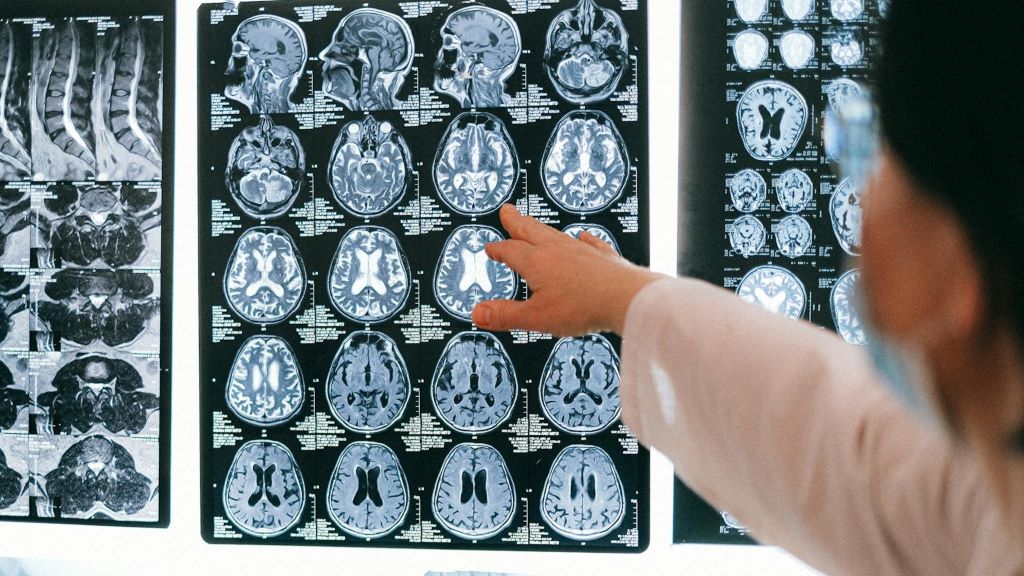SA’s Flu Rates Anticipated to Return to Pre-COVID-19 Levels

By Elri Voigt for Spotlight
COVID-19-related factors resulted in several years of lower-than-normal rates of the flu, but experts say that is now something of the past. As this year’s flu season gets under way, Elri Voigt asks several local experts what their expectations are, which flu vaccines are available this year, and whether we should be concerned about new strains of bird flu.
While most people who get the flu experience only mild to moderate symptoms, some can get severe symptoms and even die, especially the very young and the old. As Spotlight previously reported, the influenza virus causes around 11 000 deaths per year in South Africa, with around 40 000 people hospitalised.
Dr Sibongile Walaza, a medical epidemiologist and the Head of Epidemiology at the Centre for Respiratory Disease and Meningitis at the National Institute for Communicable Diseases (NICD), says that it is difficult to predict what a flu season will look like beforehand.
Nicole Jennings, spokesperson for the South African Pharmaceutical company Pharma Dynamics, agrees. “Influenza is a global disease and the spread of the virus in other parts of the world can influence the trajectory of flu seasons in different regions. For now, it’s too early to make any predictions,” she says.
It is difficult to predict the trajectory of flu seasons ahead of time, Jennings says, because of a “complex interplay” of factors, including the fact that influenza viruses are constantly mutating. This makes it difficult to accurately predict which strains of the influenza virus will dominate and how they will behave.
“The level of immunity in the population can also vary from year to year due to factors, such as vaccination rates, previous exposure to similar strains and so forth,” she adds. “However, surveillance efforts, modelling and ongoing research conducted by the NICD can help the public to prepare for the cold and flu season as best possible.”
NICD guidelines published in April 2023 already stated that since the COVID-19 pandemic, there have been some changes in the timing of flu transmission.
The transmission reduction strategies – like masking and social distancing – during the pandemic had an impact on the rates of flu transmission and the duration of the flu season between 2020 to 2022, according to Dr Jocelyn Moyes, a medical epidemiologist at the Centre for Respiratory Disease and Meningitis at the NICD.
Back to normal?
Although the numbers were still much lower, it appears that the winter flu season’s peak had started to return to levels seen pre-COVID-19 in 2022 and 2023, Walaza confirms.
“In 2023, the flu season was a little bit longer than we’d seen before [COVID-19], but it started on time. So, in terms of the timing, it was similar to what we would see before COVID-19,” she says.
When exactly the winter flu season starts each year varies, Walaza says, but on average it can start anytime from the third week of April and can circulate until August. It has been known to go on longer though.
At the time of the interview, the NICD had only detected sporadic cases of flu but had not yet seen the sustained uptick in transmission which usually signals the start of the flu season. The latest surveillance data published by the NICD indicate that 108 cases of influenza had been detected so far this year. The real number of flu cases will be much higher since most cases of flu are not diagnosed.
This year’s vaccines
Walaza explains that the flu vaccine is updated each year based on the World Health Organization’s (WHO) recommendations. This is to ensure it provides protection against evolving influenza viruses seen in global surveillance programmes.

Flu shots used in South Africa are inactivated influenza vaccines. This means they do not contain live virus and cannot cause flu.
In the public healthcare sector, the government this year procured the trivalent vaccine which protects against three strains of the influenza virus – two influenza A strains (H1N1pdm 2009 and H3N2) and one influenza B strain (known as the B/Victoria), Walaza says. These jabs should be in public health clinics by the first week of May.
In the private healthcare sector, she says a trivalent and a quadrivalent vaccine are available. The quadrivalent shot includes protection against a second influenza B strain (B/Yamagata), but that strain has not been seen circulating in a few years. These flu shots are already available in the private healthcare sector.
The level of protection provided by the flu shot varies and generally it ranges in effectiveness against infection from about 30% to 60%, according to Walaza, but importantly it protects against severe illness.
How effective this year’s flu shot will be depends on which influenza strain or strains circulate in the country. “The hope is that if an individual gets infected by any of those strains [in the vaccine], then that individual is protected or has some level of protection [against these strains] and will have some protection against severe illness” she says.
However, she adds, it’s difficult to predict how effective this year’s flu shot will be against preventing someone from getting the flu or experiencing symptoms of the flu. This is because there is always the chance that the strains which do circulate this season are different from the ones in the vaccine or have mutated so the shot becomes less effective.
Should we worry about bird flu?
At the start of April, the WHO reported that one case of avian influenza A (H5N1), one of the avian/bird flu viruses, had been detected in a person in the United States after they had come into contact with a cow who was presumed to be infected. This was the second human case of influenza A (H5N1) detected in that country, and the first case of a person being infected with this strain after coming into contact with a non-avian species.
So far, the risk to the general public is low, according to the WHO.
“Since the virus [avian influenza A (H5N1)] has not acquired mutations that facilitate transmission among humans and based on available information the WHO assesses the public health risk to the general population posed by this virus to be low and for occupationally exposed persons, the risk of infection is considered low-to-moderate,” the WHO statement said.
There are many subtypes of influenza A viruses, Moyes tells Spotlight, and avian influenzas are similar to human influenza A viruses. And so, she explains, there is always a possibility that these viruses mutate, enabling them to infect humans, or more importantly develop the ability to transmit effectively from one person to another. This could potentially cause a pandemic.
She tells Spotlight that over the last decade sporadic cases of human avian influenza have been described related to global outbreaks in birds. These cases have all been in people who have had very close contact – usually during the culling process – with sick birds. She advises that people involved in the management of avian influenza outbreaks take precautions, such as using appropriate personal protective equipment to prevent infection.
When asked whether people in South Africa need to be concerned about a potential bird flu outbreak, Walaza says so far, no cases of bird flu infection in humans – even during the recent widespread outbreaks in birds – have been identified in the country. But it is something that the NICD is aware of and surveillance for human cases during outbreaks of bird flu in the country is being conducted.
“What’s important though to note is that even when cases have been detected [in other countries] the risk of person-to-person transmission is extremely low,” she adds.
Launch of Cough Watch SA
Walaza tells Spotlight that most of the data gathered by the NICD on influenza is from surveillance in healthcare facilities, which means that not all cases of influenza are necessarily identified.
To gather additional data, the NICD is in the process of rolling out an additional digital surveillance system to detect influenza cases, called Cough Watch SA. This online web application allows the public to report influenza symptoms.
People who sign up are asked to provide basic demographic data like age and postal code. Participants will then be sent a weekly prompt asking if they’ve had any flu symptoms. If they have had symptoms, according to Walaza, then they will be asked to provide more information. This data will then be linked to the NICD database where it will be compared to other surveillance data to see if the platform could serve as an early warning system for a flu outbreak.
Cough Watch SA will be launched in the week of 7 May, says Moyes, who urged the public to help keep an eye on flu by signing up.
Republished from Spotlight under a Creative Commons licence.
Source: Spotlight






